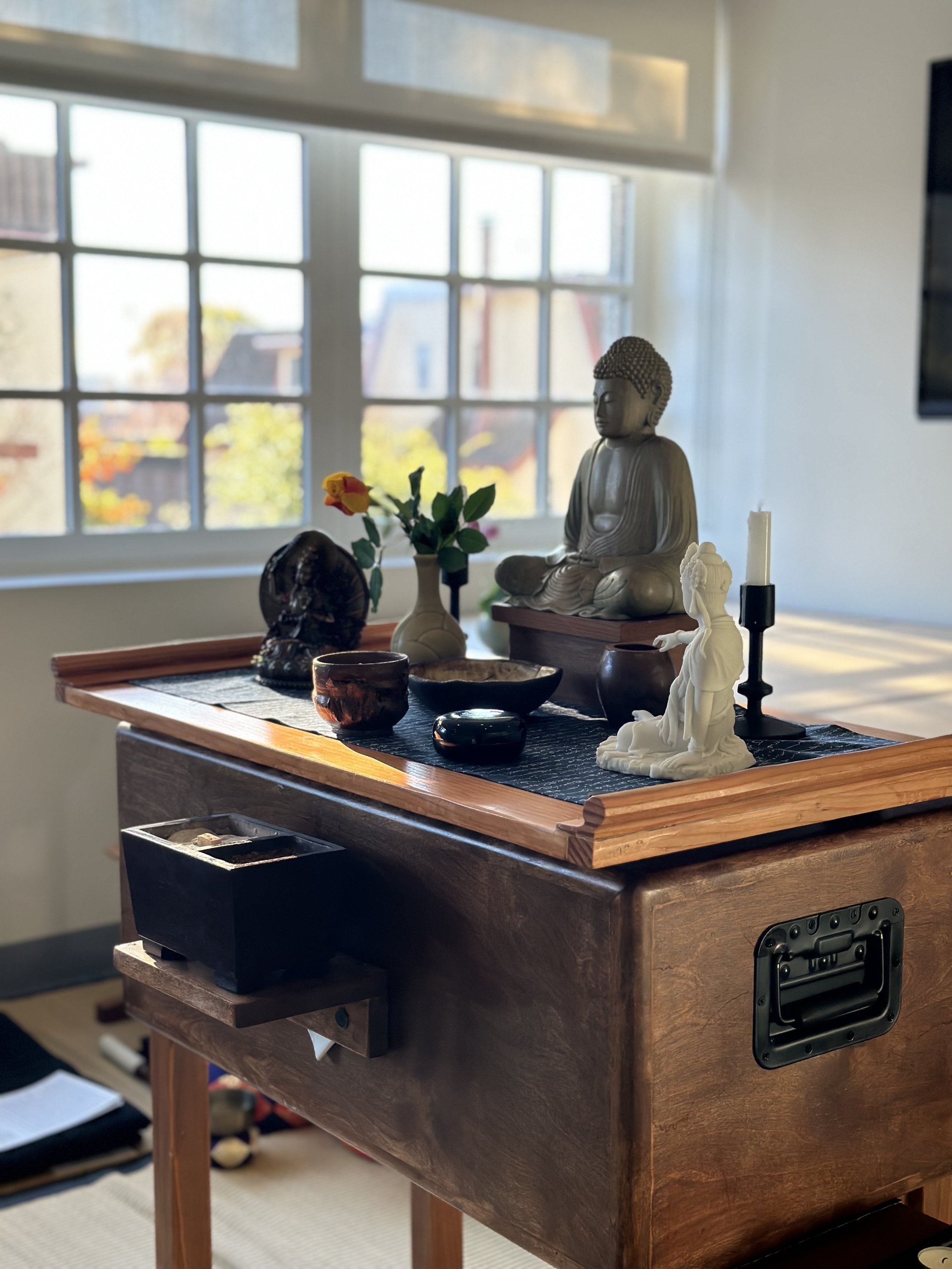The thing your average buddhist spends the most time on is watching the breath. Dauntingly, this simple practice immediately becomes frustrating as the ever helpful ego steps in and tries to run the show. The next thing you know, you are sitting there with a growing feeling of awkwardness which occasionally transforms into another feeling...growing suffocation. From there, myriad forms of hilarity can ensue. The ego, it turns out, is really not good at respiration. Thus, we practice with the breath for exactly that reason.
Wax On – Wax Off
One of the disappointing things about Zen is that I always thought there was going to be more wax on – wax off. Like most people, my idea of Zen was formed at the movies and in dormitory conversations and in the occasional buzzed hot tub speculations. The twin pillars of eastern philosophy were Shogun and the Karate Kid, where Arnold from Happy Days turns out to be a totally cool old Samurai dude living in LA who teaches young Daniel-san karate by making him wax his car over and over again. Just when Daniel-san is about to quit, Mr Miyagi gives him is first karate lesson and Daniel-San discovers that he already knows how to block the attacks - it’s the same motion as putting the wax on and wiping it off.
A Pocket Buddha
2500 years of fascination with a single individual have cultivated fields and fields of prose and poetry, with each age and each sect adding more and more words to a body of writing larger than any library. As Buddhism has deepened over the centuries, the number of perspectives has grown exponentially and any statement of “fact” about the Buddha can be challenged from all sides as soon as it arises. Even if a lifetime of scholarship were endeavored to the cause, one would be hard pressed to gain a complete understanding of the facets of Buddhism in a single incarnation. Each of us, then, is left to fashion our own construction of the Buddha. Dauntingly, this is like trying to remake a crystal vase from the shards of glass found in a dustpan.
Hardwiring the Brain: The new science of sculpting the mind.
Within the last generation, what we thought we knew about the brain has completely overturned, as new testing devices and methods have been created to begin the process of accurately measuring and mapping the mind. These discoveries have been nothing short of revolutionary. While the brain is not the mind, it is the physical basis of the mind and understanding the machinery behind the curtain renders the mind trainable, not just in concept but as a physical reality. Twenty years ago it seemed to be a scientific fact that the brain was static and the focus for brain health was on the conservation of a finite number of brain cells. Then, just as Steve Jobs was being “permanently” removed from Apple in disgrace, nueroanatomists were beginning to direct incredibly sensitive scanners inside the cranium. It was discovered that inside the brain, just like in the world of Apple, real genius, even what the organism is and does, is not nearly as fixed as the experts thought. What has emerged since then has been the unveiling of a brain that is regenerative, reconfigurable, and trainable.




